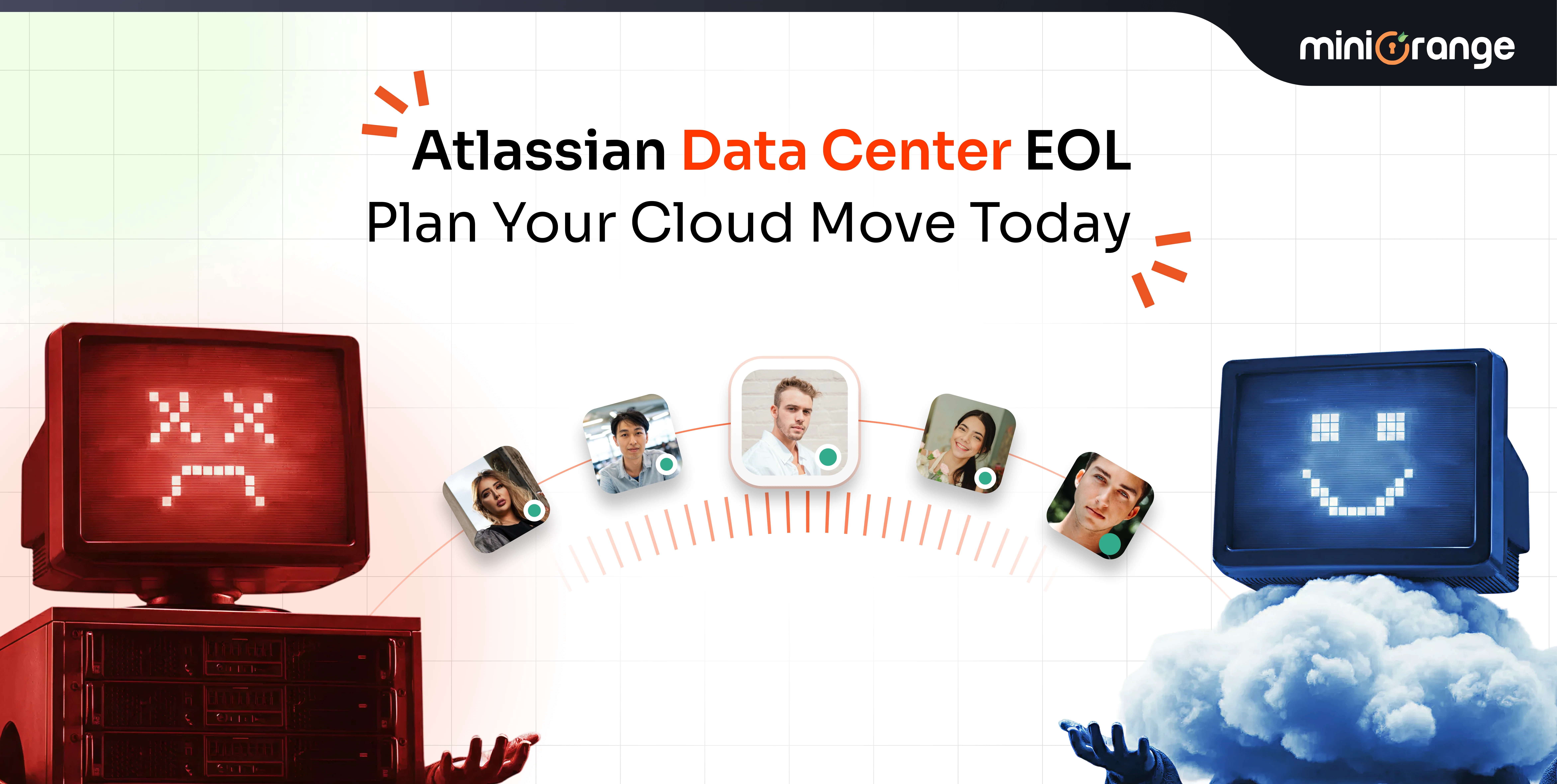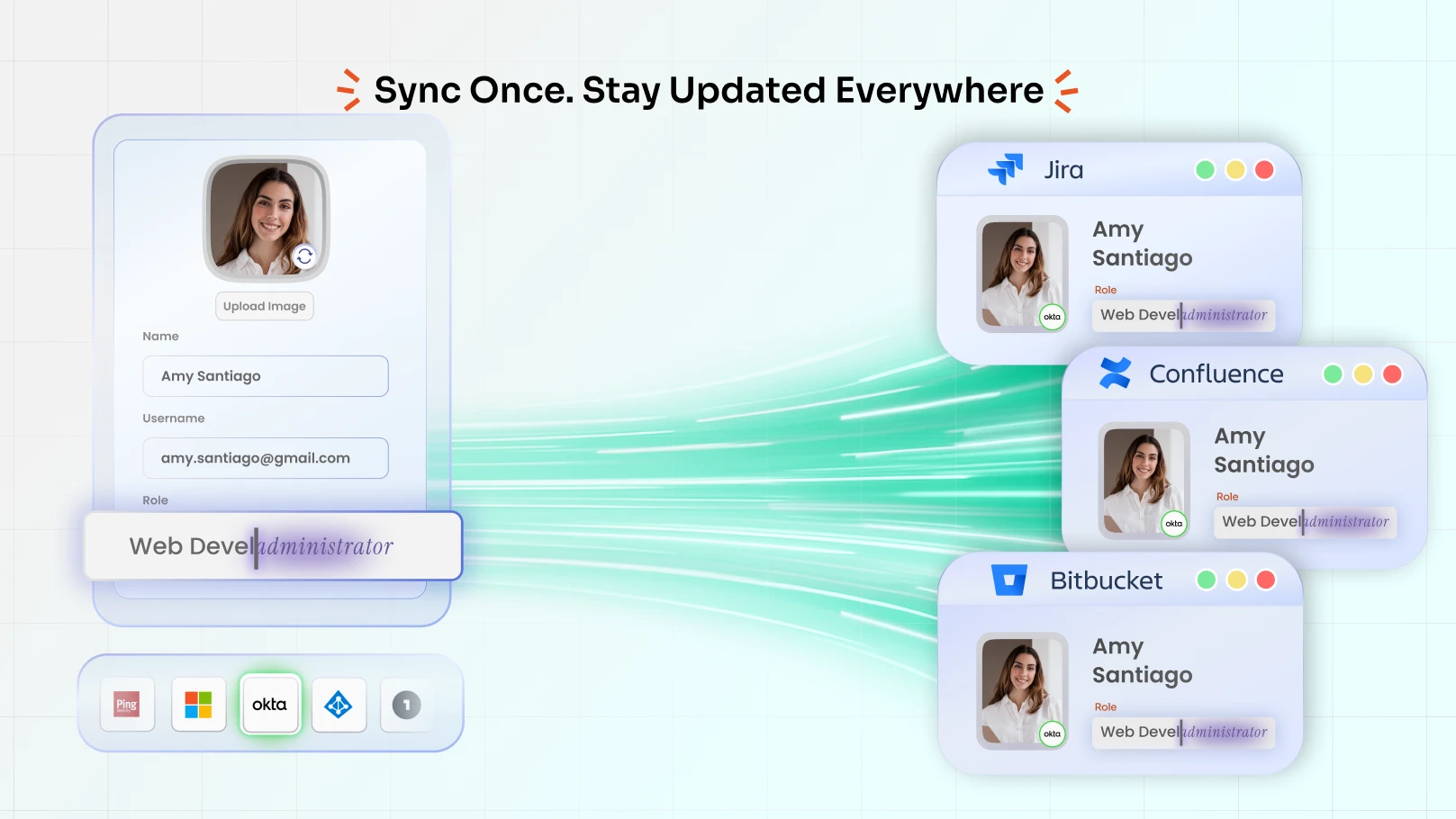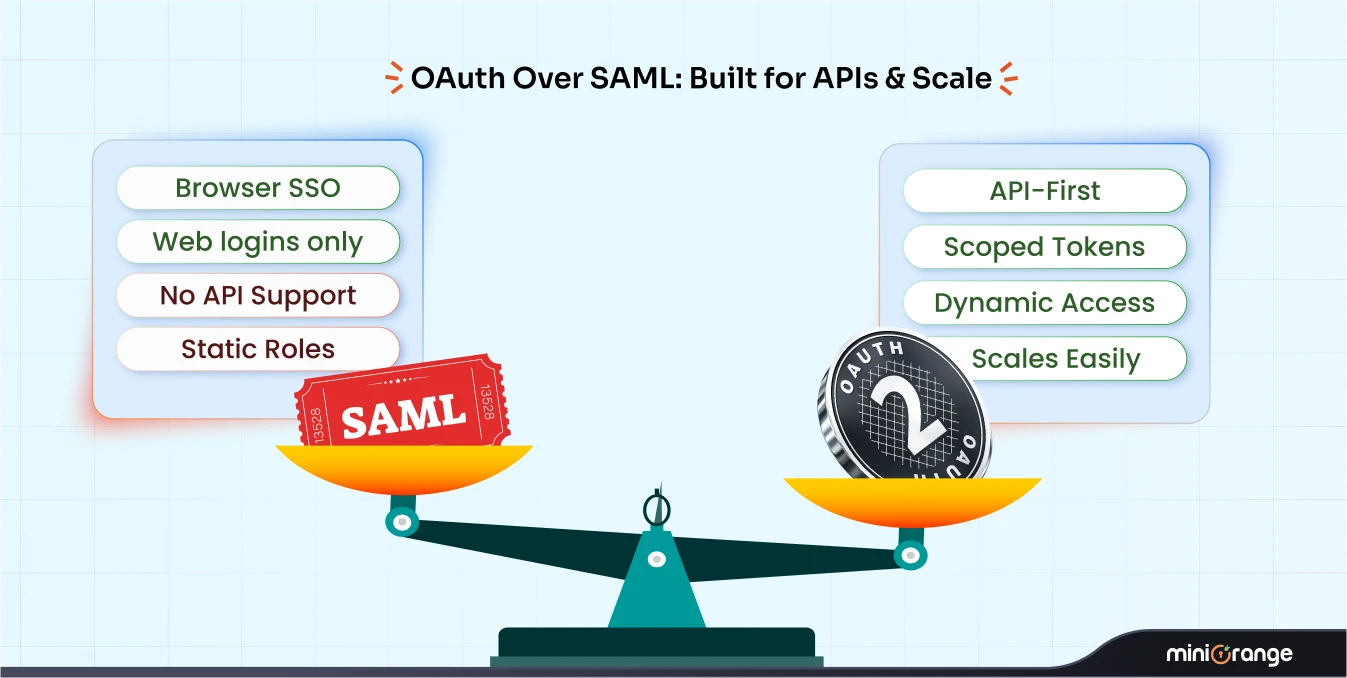Are you still manually adding users one-by-one in Jira or Confluence? In 2025, this approach is not just inefficient, it poses significant strategic risks to security and scalability.
Teams are expanding rapidly, compliance standards are intensifying, and traditional ticket-based provisioning cannot meet modern demands. Manual processes create delays during onboarding, role changes, and offboarding. Governance gaps lead to stale accounts, security vulnerabilities, and audit failures.
The Old Way: Manual Onboarding
Traditionally, Jira administrators manage user accounts manually. From creating an account to logging in each attribute, the complete process is carried out by the admin themselves. The process typically involves:
- Logging into the Atlassian Admin Console
- Clicking Create User and filling out user details (name, email)
- Assigning the user to projects, groups, and permission schemes
- Notifying the new user via a separate email system
Because each step relies on manual input, this method is inherently time-consuming and error-prone. Hence, the admins have to face the following challenges:
- Delays: Helpdesk tickets create bottlenecks; onboarding requests can take hours or days.
- Typographical errors: Mistyped emails and usernames lead to login failures and support tickets.
- Security gaps: Departed employees may retain access if deprovisioning requests are missed.
- Inconsistent permissions: Different admins assign users to groups in different ways, leading to permission sprawl.
Impact of Traditional Manual Onboarding
- Slow user access: New hires lack timely access to critical tools, delaying productivity.
- Frustrated teams: Developers and project managers face unnecessary wait times, impacting deliverables.
- Audit failures: Orphaned or inactive accounts result in compliance audit issues.
- Increased support load: IT teams field repetitive tickets, diverting resources from strategic projects.
What Is SCIM?
System for Cross-domain Identity Management (SCIM) is an open standard API designed to automate user identity lifecycle management across multiple domains and applications.
How Does SCIM Help in User Management?
- Provisioning: Automatically create and update user accounts across multiple Atlassian products when new identities are added in your Identity Provider (IdP).
- Deprovisioning: Instantly disable or remove users who leave the organization, ensuring no orphaned credentials remain.
- Synchronization: Keep user attributes, such as name, email, department, and roles, consistent across all connected systems.
How to Integrate SCIM with Atlassian Suite?
miniOrange SCIM connects your IdP with Atlassian Cloud and Data Center platforms by:
- Connecting to your IdP: Use OAuth or API token-based authentication with providers like Okta, Azure AD, OneLogin, PingFederate, Keycloak, ForgeRock, and more.
- Mapping Attributes & Groups: Define how IdP user attributes map to Atlassian user fields and permission groups in the miniOrange SCIM app.
- Scheduling Syncs or Real‑Time Push: Choose between scheduled polling or real‑time SCIM push events for immediate updates.
- Monitoring & Reporting: Track provisioning logs, errors, and sync health via the miniOrange dashboard.
Why SCIM Has Become Essential in 2025?
SCIM adoption is rapidly growing in 2025 as organizations demand more agile, secure, and standardized identity management. Here’s why SCIM is the clear choice over manual processes:
- Instant Provisioning & Deprovisioning : User accounts are created, updated, or disabled in real time based on IdP changes, no more manual delays.
- Enhanced Security & Compliance : Automated deprovisioning prevents orphaned accounts; audit-ready logs ensure you can prove compliance with regulations like GDPR and SOC 2.
- Consistent Experience Across Tools : Whether in Jira, Confluence, or Bitbucket, every user sees the correct groups, permissions, and project access immediately.
- Saving License Cost : With the miniOrange SCIM solution, deactivated users are automatically removed from the licensed group, ultimately helping reduce license costs.
- Significant Time Savings : IT and HR teams reclaim hours previously spent on repetitive tasks, allowing them to focus on strategic initiatives.
- Scalable to Enterprise Needs : Handles thousands of provisioning events per day without additional headcount or process overhead.
SCIM vs. Manual Onboarding: Comparison
Here’s a quick look at how manual onboarding method compares with SCIM.
| Criterion | Manual Onboarding | SCIM Automation |
|---|---|---|
| Speed | Hours to days per request | Seconds, triggered via API |
| Accuracy | Prone to human error | API-driven precision |
| Security | Risk of orphaned accounts | Guaranteed deprovisioning |
| Scalability | Linear workload | Handles thousands/day |
| User Experience | Inconsistent | Seamless across apps |
How Can SCIM Help Admins in User Management?
Now that we understand how SCIM works, here’s how it can look in practice. Below are key scenarios where SCIM simplifies the lives of Jira and Confluence admins, handling everything from onboarding and access changes to secure offboarding, all without manual intervention.
- Onboarding for New Hires : As soon as HR marks a new employee as "Active" in the IdP, SCIM auto-creates a Jira and Confluence account, adds them to the correct teams, and sends a welcome email, ensuring zero onboarding delays.
- Automated Role Change Updates : When an engineer is promoted to Team Lead, their group memberships and permission schemes in Jira automatically adjust to grant project administration rights.
- Instant Offboarding of Departing Employees : Upon deactivation in the IdP, SCIM instantly disables all Atlassian tool access, eliminating security risks from orphaned accounts.
- Managing External or Guest Users : Project stakeholders or auditors added to an external identity store get scoped access to Confluence spaces, with attributes and group assignments synced seamlessly.
miniOrange SCIM vs. Atlassian Guard
If you're evaluating SCIM solutions for Jira and Confluence, it's important to understand how different providers stack up. While Atlassian Guard offers native SCIM support, it’s primarily built for simpler use cases and limited environments. In contrast, miniOrange SCIM is designed for flexibility, extensibility, and support for hybrid enterprise needs.
Here’s how both compare on the basis of requirement of different features.
| Feature | miniOrange SCIM | Atlassian Guard SCIM |
|---|---|---|
| IDP Compatibility | Supports Okta, Azure AD, OneLogin, PingFederate, Keycloak, ForgeRock, and more | Limited to Okta and Azure AD |
| Group Mapping | Fully customizable mappings, conditional rules, and transformation scripts | Automatic mapping with minimal customization |
| Provisioning Method | Flexible REST API, supports event-based pushes and scheduled syncs | Native SCIM with fixed sync intervals |
| Cloud & DC Support | Available for both Atlassian Cloud and Data Center | Cloud-only |
| Attribute Control | Fine-grained control over attributes, custom filters, and mappings | Basic attribute syncing only |
| Support & SLAs | Dedicated 24/7 support team, proactive monitoring, and custom SLAs | Self-service portal, community forums |
Takeaway: For enterprises with complex identity landscapes, hybrid deployments, and strict security requirements, miniOrange SCIM delivers unmatched flexibility, control, and support.
How to Implement SCIM in Atlassian?
Once you’ve decided SCIM is right for your Atlassian environment, the next step is implementation. Below is a step-by-step breakdown to help you integrate SCIM with Atlassian using miniOrange’s SCIM app, covering everything from prerequisites and configuration to testing and going live.
Prerequisites
- Atlassian Admin Access: You need site owner or sysadmin rights for Jira, Confluence, and Bitbucket.
- User & Group Schema Definition: Map out the user attributes and group structures in your organization to align with Atlassian permission schemes.
Integration Flow
- Connect Your IdP to miniOrange SCIM App
- In the miniOrange plugin, select your IdP, choose SCIM, and obtain the Base URL and Bearer Token. Keep them handy for the configuration.
- Configure SCIM Provisioning App in IDP
- Input the base URL and bearer token in your IDP under the configured SCIM provisioning app.
- Map Attributes & Groups
- Use the miniOrange dashboard to map IdP attributes (e.g., email, department) to Atlassian user fields and assign group membership rules.
- Choose Sync Method
- Real-Time Push: Immediate updates on every IdP change.
- Scheduled Polling: Periodic sync (e.g., every 15 minutes) for lower IdP load.
- Validate & Test
- Run in staging with a test user group, verify account creation, updates, and deprovisioning workflows.
- Go Live & Monitor
- Enable provisioning for all users and monitor via miniOrange logs and Atlassian audit reports.
Solving Real-World SCIM Deployment Challenges
Even with automation, SCIM provisioning isn’t always straightforward, especially in enterprise environments with multiple IdPs, custom attributes, or hybrid Atlassian deployments. Here are some of the most common challenges admins face when rolling out SCIM and how miniOrange’s SCIM app helps overcome them with precision and flexibility.
External or Guest User Management :
Challenge: Onboarding external stakeholders or auditors in a separate identity store can create inconsistent access.
Solution: Define dedicated group filters and group mappings in the miniOrange SCIM app to segment external users and automatically assign correct permissions.
Handling Non‑Standard Attributes :
Challenge: Your organization may need custom attributes (e.g., employee ID, cost center) that standard SCIM schemas don’t cover.
Solution: Use miniOrange’s custom attribute mapping engine to define and transform these fields, ensuring your IdP’s unique schema syncs to Atlassian.
Sync Health & Error Monitoring :
Challenge: Sync failures or mapping errors can silently break provisioning workflows.
Solution: Enable real‑time alerts and daily summary reports in the miniOrange dashboard. Leverage built‑in retry logic and consult dedicated support for root cause analysis.
Hybrid Cloud & Data Center Deployments :
Challenge: Managing SCIM across both Cloud and on‑premises Data Center instances may introduce connectivity or versioning issues.
Solution: Use miniOrange’s unified SCIM proxy, which abstracts environment differences and provides a single pane of glass for configuration and monitoring.
Conclusion
Manual user onboarding is no longer viable in 2025. By adopting SCIM, organizations can automate identity lifecycles, tighten security, and deliver a consistent experience across Jira, Confluence, and Bitbucket. When evaluating SCIM solutions, prioritize broad IdP compatibility, fine‑grained attribute control, and strong support capabilities.
With miniOrange SCIM, you get all three, plus seamless Cloud and Data Center support, so your teams can focus on innovation, not administration.
Frequently Asked Questions
Q1: Which Identity Providers (IdPs) are compatible with miniOrange SCIM app?
ANS: miniOrange SCIM supports major enterprise IdPs including Okta, Azure AD, OneLogin, PingFederate, Keycloak, ForgeRock, and more via OAuth or API token authentication.
Q2: Can I use SCIM with both Atlassian Cloud and Data Center?
ANS: Yes. miniOrange provides seamless SCIM provisioning for both Atlassian Cloud and on‑premises Data Center through a unified proxy.
Q3: How do I manage custom or non-standard user attributes?
ANS: Use miniOrange’s custom attribute mapping engine to define, transform, and sync any unique fields (e.g., cost center, employee ID) from your IdP to Atlassian.
Q4: Is there a free trial or SLA-backed support for miniOrange SCIM?
ANS: You can start with a 30‑day free trial. Production plans include 24/7 dedicated support, proactive monitoring, and custom SLAs.




Leave a Comment